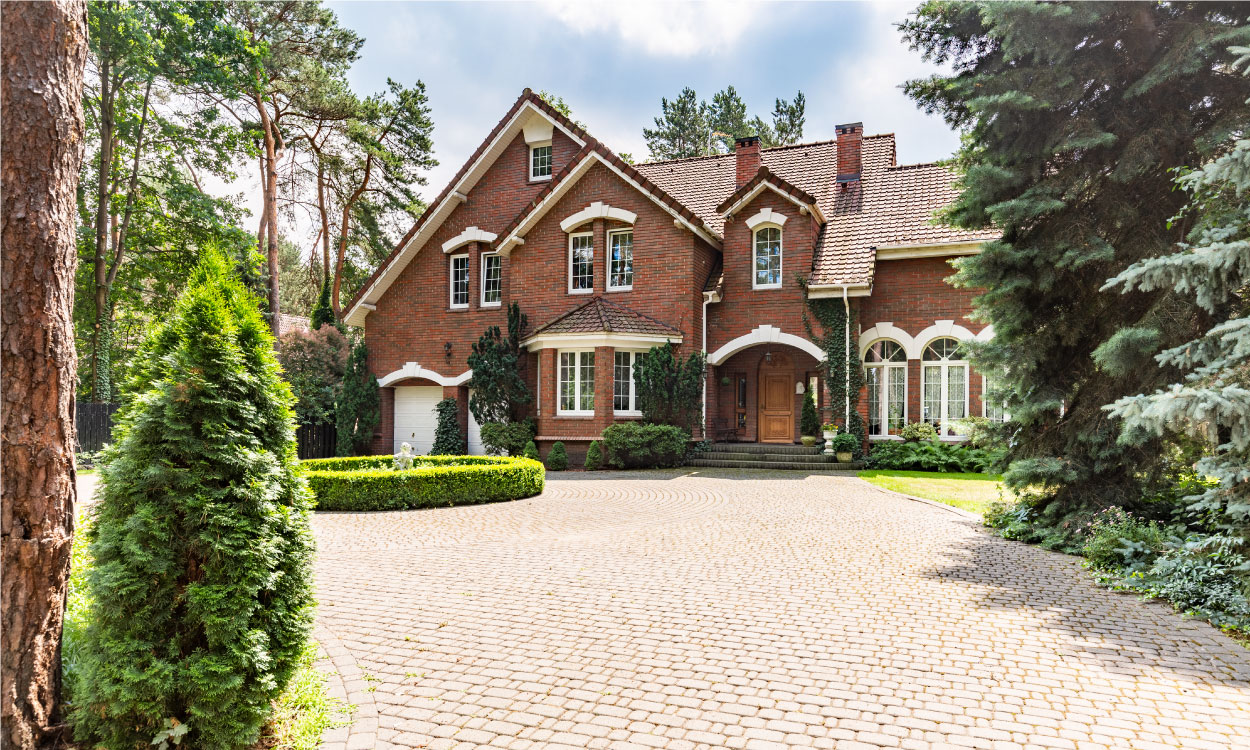4 Tips For Building A New Driveway

Building a new driveway is both an exciting and daunting process. There are many things to consider, from the type of material you want to use to how much you’re willing to spend.
If you want your driveway to last and look great for as long as possible, there are some things you should keep in mind. Here are some tips to help you get the information you need to build a new driveway successfully:

Choose Your Driveway Type
The driveway is the first thing your guests see when they arrive at your home. Choosing the right type of driveway for your property and lifestyle is crucial.
Here are some of the most popular driveway types and their benefits:
Asphalt Concrete
Since this is one of the most durable driveway types, it’s a popular choice for busy families or homeowners with children. Asphalt concrete driveways also come in various colours and styles to complement your home’s exterior design.
Cobblestone
Cobblestone driveways are very popular. It has been used for centuries and has been around since the Roman Empire. Cobblestone’s distinct appearance makes it an excellent choice for homeowners. It’s also very durable and can last for decades if properly maintained.
Generally, the cost of a cobblestone driveway can be expensive, even more so if you want them professionally installed on your driveway.
Gravel
Gravel driveways are great for rural properties where asphalt or concrete are inaccessible or prohibitively expensive to install. They also help keep the dust down during construction projects because gravel absorbs moisture from rainwater instead of allowing it to pool on top of a hard surface as asphalt or concrete would.
Gravel is inexpensive but may need frequent maintenance if you live in high rainfall or snowfall.
Concrete
Concrete driveways are less expensive than asphalt concrete but they can crack over time due to weather conditions. Concrete driveways are also harder to install than asphalt concrete because they require more preparation before laying the surface layer. You can check the cost of the concrete type of driveway compared to the cost of imprinted concrete driveways and see which one is better.
Consider Cost
When building a new driveway, it’s essential to consider the cost. Spending too much on a driveway can be wasteful, even if you have the money.
Consider these tips to avoid overspending:
- The cost of materials varies widely. If you want to save money on your project, consider buying materials in bulk or from a store that sells used items.
- Keep maintenance costs in mind. It’s easy to forget about maintenance when planning your project, but it’s crucial to think about how much it’ll cost in the long run. Regular driveway maintenance is necessary and can include sealing cracks, resealing chips, and filling in potholes.
- Consider the longevity of your material. Some materials last longer than others, so if you’re considering using concrete, gravel, or asphalt, make sure they’ll stand up against any weather conditions before installing them permanently.
When building a new driveway, you want to ensure that it’s done in the most cost-effectively possible. This is especially true if you build a new driveway for your home.
Select The Layout
When building a new driveway, the first thing you need to consider is the layout. There are several ways to lay out a driveway, and each has its own benefits and drawbacks.
Here are two of the most common options:
Straight Driveway
It’s by far the most basic design. It runs from one end of your property to the other in a straight line, with no curves or bends. This gives it a clean, uncluttered look that’s perfect for large properties with plenty of space to spare. However, this type of design may not be ideal if there’s only one entrance to your home.
Curved Driveway
The curved driveway offers many advantages over straight driveways. It makes it easier for guests to find their way into your yard from different directions, such as your neighbour’s house. It also provides more privacy between neighbouring properties because homes have fewer direct lines of sight.
Consider The Drainage
If you’re building a new driveway, you need to consider drainage. The best way to test this is to construct your driveway and then see what happens when it rains.
If your driveway lacks drainage, it’ll simply flood, causing problems for anyone who walks or drives over it. The water will also damage your home’s foundation without drainage.
If you have an existing driveway that doesn’t have any form of drainage, consider adding one to prevent damage from occurring. This can be accomplished by putting in a French drain system or simply digging trenches to allow water to drain out of the driveway and away from your home.
A French drain system is a trench dug in the ground with stones placed along the bottom and sides for drainage purposes. These stones are then covered with dirt, making them difficult to see from above ground level.
Final Thoughts
As you can see, there are multiple factors to consider when building a new driveway. It’s essential to ensure that everything is done correctly and that the result is something you’re happy with.
The tips in this article are a great place to start, but they’re not exhaustive. You should do more research and ask around before deciding on anything.







